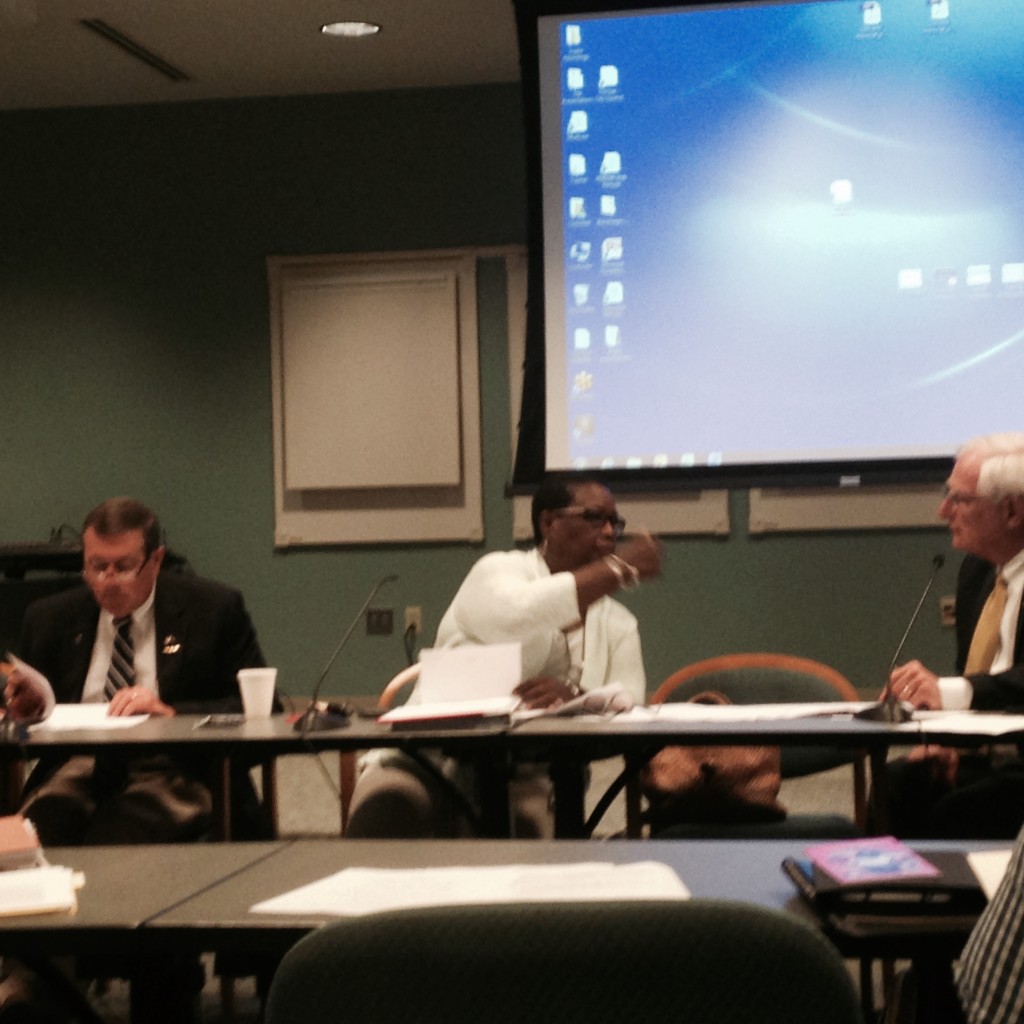
The Jacksonville City Council’s Blight Committee, chaired by E. Denise Lee, is technically an ad hoc committee. For the last couple of years, though, it has done some of the most essential work of any city council committee, serving as a clearinghouse to address quality of life issues that affect older and newer neighborhoods alike.
Wednesday morning’s meeting was no exception as the panel dealt summer programs for at-risk youth, the environmental variables that help to cause crime, and so-called “zombie properties” that become breeding places for blight.
One discussion dealt with getting youngsters into summer programs to keep them off the streets and out of trouble. Councilman Jim Love asked whether the city could partner with the Children’s Commission, which lobbied for funding at Tuesday’s council meeting.
“If they need facilities, we can partner with them,” said Tony Lopez, of city Parks, Recreation, and Community Services. “We want to be part of the equation.”
Councilman Bill Gulliford mentioned that in the rapidly growing area of Southeastern Jacksonville, there are logistical issues, such as an “undersized park with no basketball courts.” Meanwhile, a nearby middle school, which has the necessary resources, created so many “hoops they expected” potential users to jump through that a partnership became untenable.
“When I was growing up, we had summer programs at schools,” Gulliford said. “It seems like the city is run by the OGC [Office of General Counsel] and Risk Management. You’ve got to take chances,” he said, indicating that a buy-in from the School Board would be fitting.
Everything old is new again, and Gulliford’s point is clear: Sharing limited resources can yield unexpected efficiencies.
Beyond that discussion, Steve Barreira of the Jacksonville Sheriff’s Office delivered a talk about the underlying issues of crime prevention.
Barreira used Maslow’s hierarchy of needs as a template to make the point that the perception of safety and the reality of safety are functionally the same, rooted in “the power of place.”
He went on to make points about “crime prevention through environmental design,” citing that places such as McDonald’s are intentionally uncomfortable to discourage loitering. A corollary point: That appropriate design decreases both the incidence rate and the fear of crime that people have.
The keys to crime prevention, Barreira said, are surveillance, access control, and territorial reinforcement. He stressed that surveillance alone doesn’t stop crime, and that natural surveillance should be elements of good design.
He then pointed out elements of bad “fortress design,” including the infamous Silver Foxx showbar and the generic Walgreens design that is ubiquitous in Jacksonville. With few windows, he contended, it is impossible to see what goes on in these places.
Then he pointed out similarities between school and prison design, contending that both environments exemplify “territorial enforcement.”
Conversely, blighted and neglected properties lack clear demarcations of territory, effectively creating a functional anarchy.
Perhaps no better example of such can be found than the so-called “zombie properties,” which generally are created when a bank threatens foreclosure, the mortgagee abandons the property, and then the bank abandons the process. A robust discussion dissected draft legislation to allow the city to donate property valued at up to $50,000 and vacant or boarded-up for two years to a non-profit, a private company, or a responsible adjacent property owner.
Councilwoman Lee runs the meetings with the idea of creating community-driven solutions to issues that are new to some neighborhoods and all too familiar to others. A Dunn Avenue minister brought up the need for an ordinance related to portable basketball goals. His reasoning? “Gangs are meeting at the goals,” including people from outside the neighborhoods, and “We see the degradation coming.”
Lee, in responding, got to the heart of the problem: Blight is a systemic issue. “We can mow the grass and pick up the trash, but thugs and thuggettes throw trash on the street.”
Lee has gotten plenty of negative feedback for her use of the phrase “human blight” to describe people who are engaged in such activities, but she has yet to back down from it. One suspects that she won’t be backing down anytime soon either.



